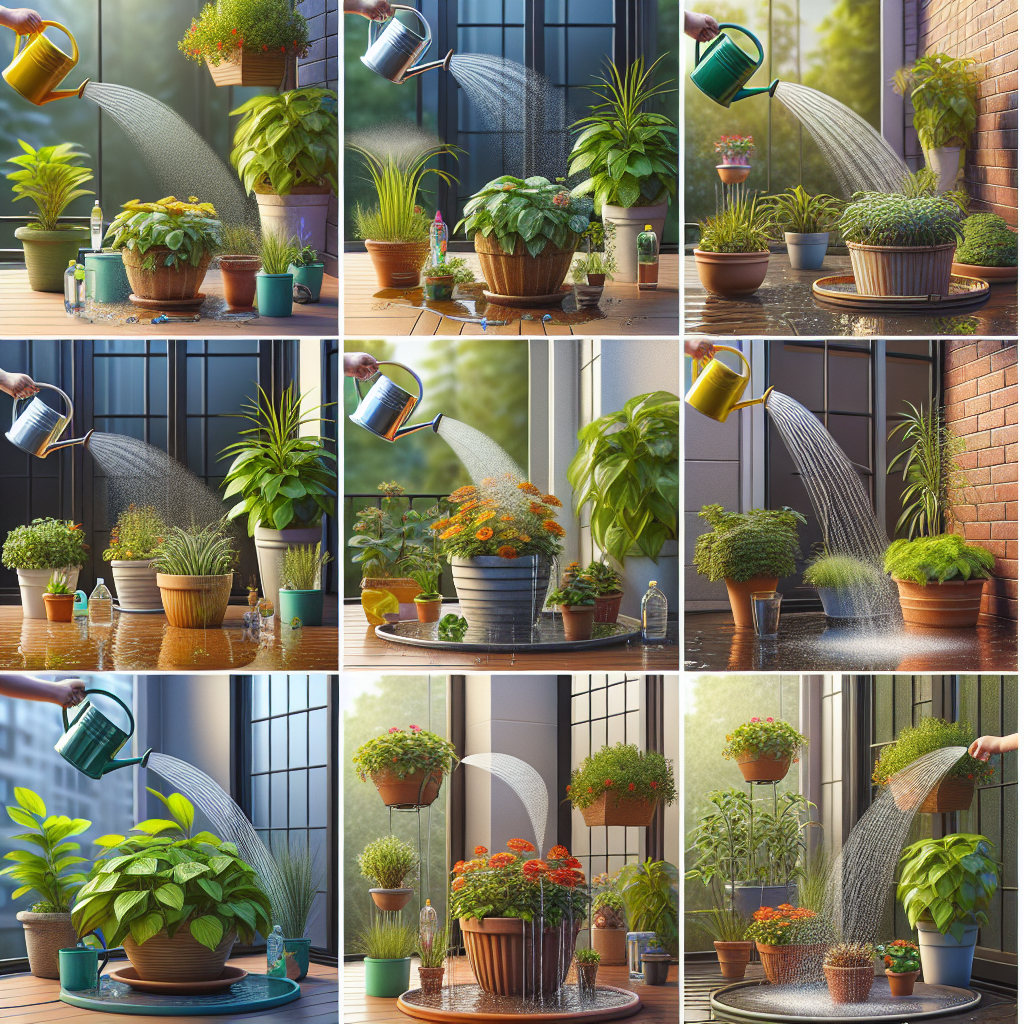Container gardening is a popular way to grow plants, especially for those who don’t have a lot of space or access to a traditional garden plot. However, one of the challenges of container gardening is ensuring that plants receive adequate water. In this article, we will discuss efficient watering techniques for container gardening to help you maintain healthy and thriving plants.
1. Choose the right containers
The first step in efficient watering for container gardening is choosing the right containers. Containers that are too small will dry out quickly and require more frequent watering, while containers that are too large may retain too much water and lead to root rot. Opt for containers with drainage holes to allow excess water to escape and prevent waterlogged soil.
2. Use high-quality potting soil
High-quality potting soil is essential for efficient watering in container gardening. Soil that retains too much water or drains poorly can lead to root rot and other issues. Look for potting mixes specifically formulated for container gardening, as these mixes are designed to provide proper drainage and aeration for plant roots.
3. Water consistently
Consistent watering is key to maintaining healthy plants in container gardens. Avoid allowing the soil to completely dry out between waterings, as this can stress plants and lead to wilting and other problems. On the other hand, overwatering can drown plant roots and promote disease.
Establish a regular watering schedule based on the needs of your specific plants and the environmental conditions in your area. In general, most container plants will need to be watered at least once a day during hot weather, while less frequent watering may be sufficient during cooler months.
4. Water at the right time of day
Watering at the right time of day can help maximize water efficiency in container gardening. Watering early in the morning allows plants to take up moisture before the heat of the day evaporates it, while watering in the evening can promote fungal growth by leaving leaves wet overnight.
Avoid watering in the middle of the day when temperatures are highest, as much of the water will evaporate before it can be absorbed by plant roots. Aim to water early in the morning or late in the afternoon for best results.
5. Use mulch
Mulch is not only beneficial for suppressing weeds and conserving soil moisture but also helps improve water efficiency in container gardening. A layer of mulch on top of the soil helps reduce evaporation by shading the soil surface and insulating plant roots from extreme temperatures.
Organic mulches such as shredded bark, compost, or straw are excellent choices for container gardens as they break down over time and add nutrients back into the soil.
6. Consider self-watering containers
Self-watering containers are a great option for those who struggle to maintain consistent watering schedules or have busy lifestyles that make daily watering difficult. These containers have built-in reservoirs that allow plants to draw up moisture as needed without overwatering or underwatering.
Self-watering containers come in a variety of sizes and styles to suit different types of plants and aesthetic preferences. They are particularly useful for larger plants or outdoor gardens where regular hand-watering may be impractical.
7. Monitor plant health
Regularly monitor your plants’ health to ensure they are receiving adequate moisture. Wilting leaves, yellowing foliage, or stunted growth are signs that your plants may be suffering from either underwatering or overwatering.
Adjust your watering schedule accordingly based on your observations and always err on the side of slightly underwatering rather than overwatering if you’re unsure about how much water your plants need.
In conclusion, efficient watering techniques are essential for successful container gardening. By choosing appropriate containers, using high-quality potting soil, watering consistently at the right time of day, using mulch, considering self-watering containers where appropriate, and monitoring plant health regularly, you can ensure that your container garden thrives with minimal effort on your part.
With these tips in mind, you’ll be well-equipped to keep your container garden looking lush and vibrant throughout the growing season!














